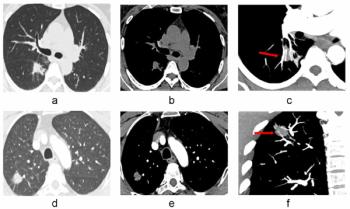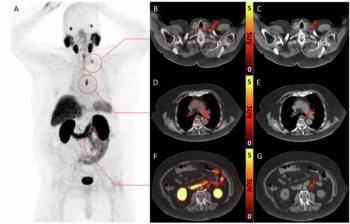
Video Display resurrects MegaScan high-resolution monitors
Video Display resurrects MegaScan high-resolution monitorsNew models to feature digital controls and brighter displaysVideo monitor vendor Video Display continues to ramp up efforts to recapture the market share once held by MegaScan, a
Video Display resurrects MegaScan high-resolution monitors
New models to feature digital controls and brighter displays
Video monitor vendor Video Display continues to ramp up efforts to recapture the market share once held by MegaScan, a supplier of high-resolution monochrome monitors acquired by VDC earlier this year. The MegaScan line of monitors were once considered the industry standard, before a series of ownership and market changes stalled new product development. The products have been undergoing a facelift since the business was sold in February to Aydin Displays, another recent VDC acquisition.
In the short time since bringing both MegaScan and Aydin into its 15-company fold, VDC has invested heavily in resurrecting the MegaScan label and expanding its line of medical imaging monitors. VDC, a major supplier to the military and industrial markets with annual revenues of $80 million, already sells several types of color CRT and flat-panel displays through its Aydin, Infodex, and Z-axis subsidiaries. The purchase of MegaScan was intended to broaden VDCs product offerings and increase its presence in the medical market, according to Ron Gesell, a PACS and medical imaging veteran who joined VDC earlier this year as vice president of healthcare markets (PNN 4/99).
VDC has targeted medical imaging as a growing market for its displays and wants to make sure it has a complete line of both color and monochrome monitors available to OEMs. The company is working to have several upgraded MegaScan models ready for the RSNA meeting, and is finalizing several OEM relationships in PACS and teleradiology. VDC is also in the process of consolidating all of its manufacturing capabilities into Z-axis, located in Phelps, NY.
We see enough of a market for high-resolution workstations in PACS and teleradiology to justify investing in developing new monitors and resurrecting the MegaScan business, Gesell said.
This is not the first time MegaScans future has been in other hands. Based in North Billerica, MA, the company was formed in 1985 to develop and market high-resolution gray-scale monitors for medical imaging. MegaScan was the first company to market a 5-megapixel portrait display that ultimately became a standard in teleradiology. The company was acquired by Advanced Video Products in the late 1980s; by 1990, AVP was a dominant supplier to the teleradiology market, according to Gesell.
AVP and the MegaScan line were purchased by EMED in the early 1990s; a few years later, EMED once again put MegaScan on the map when it introduced the first 8-megapixel monitor for medical imaging (PNN 3/98). The MD8 is still considered the highest resolution monochrome monitor on the market, Gesell said.
Even so, MegaScan sales began to slump as several companies, including Siemens and Barco, introduced their own monitors with more advanced features. Sales also suffered from the fact that EMED was selling the MegaScan monitors to the same companies it competed with in the PACS and teleradiology markets. Thus, when EMED was acquired by Access Radiology (now eMED Technologies) (PNN 12/98), Access/eMed opted to sell the MegaScan business as part of its broader strategy to focus on electronic medical imaging technology and systems.
Thats when Aydin and VDC stepped into the picture. VDC was interested in adding high-resolution monochrome monitors to its medical imaging product offerings and felt the MegaScan name still carried some weight in this market, according to Gesell. In turn, the new relationship gave MegaScan the financial stability it has been lacking. While the company had at one time seen annual sales of $4.5 million, at the time of the Aydin purchase revenues had fallen to around $1 million annually, Gesell said.
Today, VDC is focused on developing several new monitors with the more advanced features that will once again make the MegaScan label competitive in this market, Gesell said. These new features include digital controls, high contrast displays, and high brightness with dark glass.
The knock on the MegaScan was that the monitor essentially has the same architecture it had 10 years ago, so the perception was that it is out of date, Gesell said. But what is really out of date are the bells and whistles, and that is what we are changing.
VDC is developing and beginning to field test prototypes of the new monitor design with existing customers. These test sites are expected to include the VA hospitals in Baltimore and Boston, Gesell said. The company also plans to develop a lower resolution monochrome monitor for use outside the primary-read arena, such as in doctors homes and other remote locations. Eventually, VDC expects to have a MegaScan flat-panel monitor for real-time digital mammography, he said.
In the mean time, the company intends to continue selling the MegaScan line into the medical market exclusively through OEM relationships. Gesell declined to identify VDCs new OEM partners, saying only that it is formalizing relationships with two or three teleradiology vendors and one PACS supplier. In addition, VDC hopes to establish research partnerships to continue evolving and refining the MegaScan monitors. These newer features, which will include automatic luminance and uniformity corrections, are expected to be available in the first quarter of next year, Gesell said.
Search again Homepage
Newsletter
Stay at the forefront of radiology with the Diagnostic Imaging newsletter, delivering the latest news, clinical insights, and imaging advancements for today’s radiologists.






























